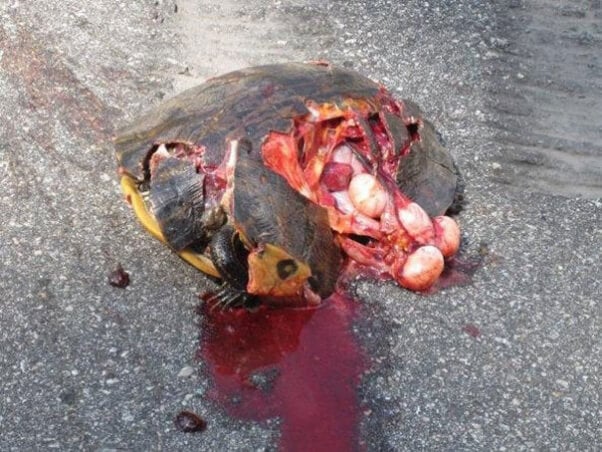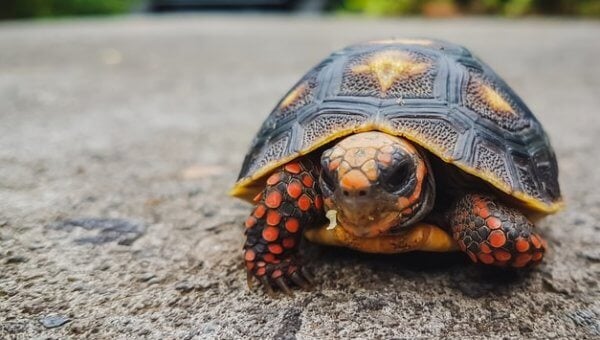THIS Turtle Crossed the Road With the Help of Compassionate Police Officers—Here’s What YOU Can Do for World Turtle Day and Beyond!
Turtles are on the move once the weather gets warm—but sometimes, a road or a highway stands between them and their destination. Speeding traffic and slow-moving turtles don’t mix, and many turtles are severely injured or killed on roads every year.
Even if their shells are crushed, turtles can remain alive for days or even weeks in agonizing pain because they have such slow metabolisms. If you see a turtle on or near a road, take action!
Turtle Rescue Lands Local Police Department a PETA Award
After spotting a common snapping turtle in the middle of a roadway, local South Windsor, Connecticut, police officers snapped into action to get the animal to safety. Using plastic shovels, they were able to scoop up the turtle and slide her to a grassy area near a pond.
Ahead of World Turtle Day (May 23), PETA is encouraging everyone to be a hero for turtles like officers Erika Kuzara and Kaitlyn Pierpont, whose shellebratory rescue has earned their department a Compassionate Police Department Award from PETA.

How You Can Help Turtles on World Turtle Day and Beyond
As egg-laying season commences, more turtles will be crossing roadways to return to their nesting grounds—and PETA is reminding everyone to be on the lookout for them. Dodging traffic can be deadly for these slow-moving animals, so keep these tips in mind if you see a turtle attempting to cross a road.
Do you know how to help turtles cross the road? Follow these five steps:
1. Safely pull over.
In any situation involving animals in the road, always use extreme caution to avoid causing an accident or becoming injured yourself. Park in a safe place, put your hazard lights on, and make sure that traffic is clear before venturing out onto the road. You won’t be able to help any animals if you’re laid up in a hospital (or worse)—so be careful!
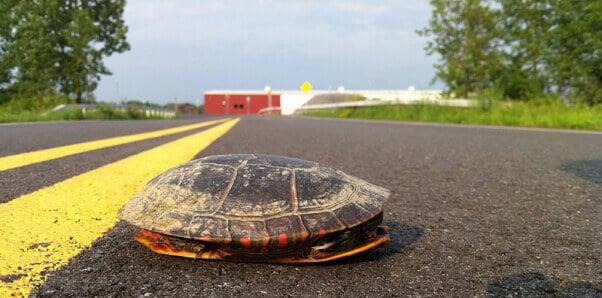
2. Speed up the process.
Turtles in danger of being struck by a car (but who are uninjured) should be helped across the road. Pick them up by grasping them firmly by both sides of the body, in front of their hind legs. Be careful not to drop them!
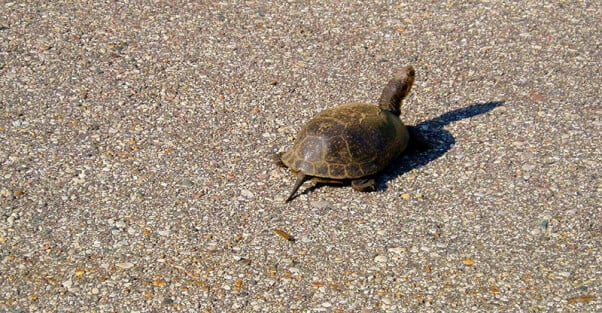
Large snapping turtles have long necks and can bite hard, so instead of picking them up, gently push them from behind to safety with a blunt object. Don’t use anything sharp that could cause injury.
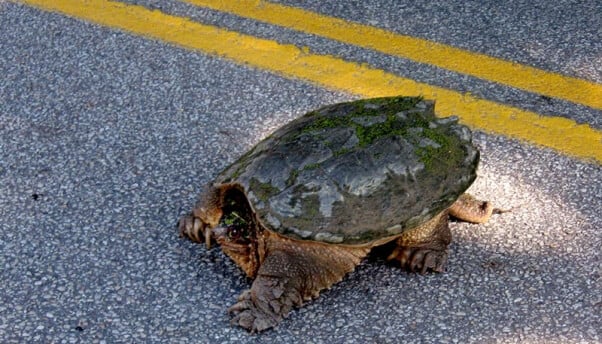
Always keep them moving in the same direction that they were headed. Do not try to make them change course, as they have a destination in mind and will simply try to cross the road again if placed back where they started from. Once they’re safe on the other side, leave them alone. Don’t relocate turtles to new areas, even if you think their current location is odd (unless it is obviously hazardous, such as a busy parking lot). Moving them to an unfamiliar location can subject them to foreign diseases and parasites that they lack a natural immunity to, so that should be avoided.
3. Get help for injured turtles.
If you see an injured turtle on the road, rush the animal to a veterinarian, an animal shelter, or a wildlife rehabilitator to be assessed.
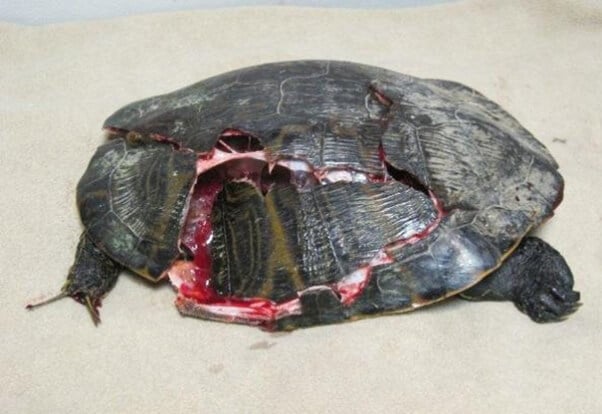
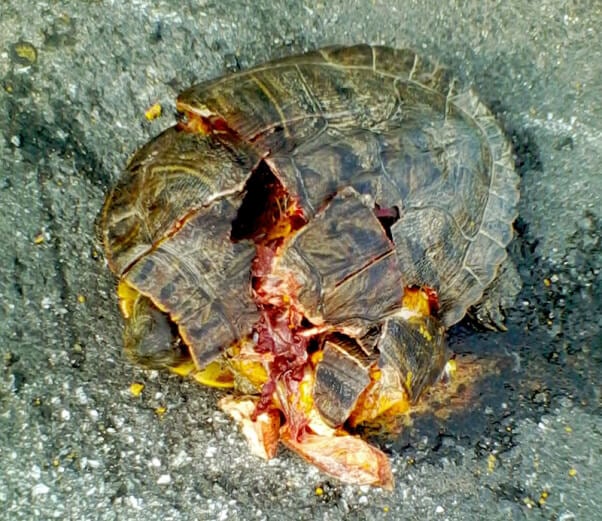
4. Make sure that the turtle isn’t suffering.
Even if you think an animal is dead, always stop to make sure. Turtles with completely crushed shells could still be alive and suffering. Test for a reaction by gently pinching a back toe or touching the corner of his or her eyelid to see if the turtle pulls back or blinks.
5. Help turtles avoid the road completely.
If you’re in a grassy area and notice turtles heading toward a road, take action before it’s too late. Just remember: Always keep them moving in the same direction that they were headed and don’t relocate turtles to new areas.
Visit PETA’s Wildlife Emergencies page for more tips on helping animals in trouble.

